Rehabilitation Institute Reimagines Iconic Property

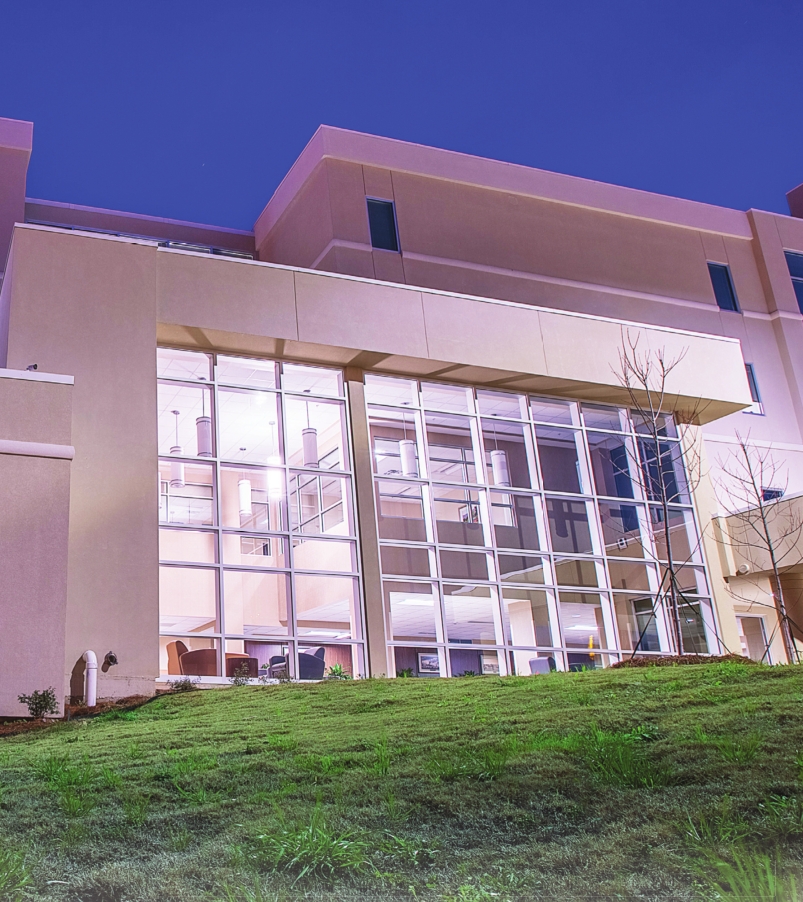
Repurposed for the future, a landmark hilltop property is now larger and infinitely more modern, bringing new life to historic Highland neighborhood.
Rehabilitation” describes not only the primary function of Willis-Knighton’s newest hospital on Line Avenue near I-20, but the impact health system officials hope it will have on Shreveport-Bossier and the Highland neighborhood.
For years the building that has been transformed into the WK Rehabilitation Institute stood vacant with “For Sale” signs. It had closed in 2010 after financial problems forced the company that purchased it from Doctors’ Hospital to close it permanently. No buyers came forth for the old hospital on the hill. That changed in 2014.
Willis-Knighton became interested in the building during the Ebola virus scare that fall. Knowing that isolating patients was a better option than integrating them into a population of people who are already ill or injured, Willis-Knighton executives thought the vacant hospital might be an option if the virus appeared in Shreveport. Although the Ebola threat ebbed, a call to the realtor brought interesting news. The once hefty price had been substantially reduced. James K. Elrod, president and CEO of Willis-Knighton, began to think of ways it could be used to benefit the health system and the community, pulling together a team of key executives to consider repurposing it.
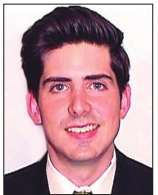 "If we’re able to wean someone off drugs or alcohol or pull them back
from suicidal tendencies, if we’re able to help someone walk again
after a traumatic injury, at the end of the day I think we’ve done
something special.”
"If we’re able to wean someone off drugs or alcohol or pull them back
from suicidal tendencies, if we’re able to help someone walk again
after a traumatic injury, at the end of the day I think we’ve done
something special.” – Ryan Smith, administrative analyst and project manager
Chris Mangin, director of physical medicine and rehabilitation, was one of those executives. His department will share a large portion of the building for both inpatient and outpatient physical rehabilitation. He pointed out that its central location was a selling point for his department located at Willis-Knighton Medical Center (North) on Greenwood Road. “It’s only three miles from where
we’re located now, but it’s a little bit closer to the people in Bossier. Plus, it’s still on the interstate, very accessible to I-49 and I-20. That’s a big bonus.”
Also in the group was Tim Wilcox, director of behavioral medicine, whose department is moving from a smaller space at Willis-Knighton South to the new location. “It ties back to community revitalization,” Wilcox affirmed. “One of the things we hope will be an offshoot of this is getting our staff to become involved members in the Highland community. Now that we’re going to be working here, this is our community. This is our neighborhood that we want to be involved in it to help.”
Joining
physical rehabilitation and behavioral rehabilitation in the move will
be the Willis-Knighton Outpatient Dialysis program, moving from cramped
quarters at Willis-Knighton North. The three departments will be part of
a fullyfunctioning hospital with a total of 65 beds.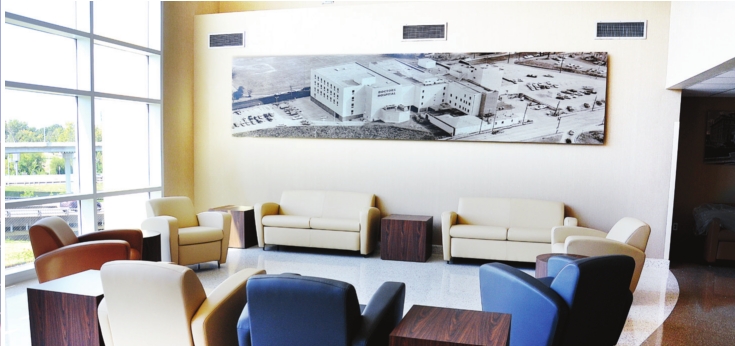
As the hospital focuses on rehabilitation, it will not offer emergency or surgical services found at the four Willis-Knighton acute care hospitals.
The transformation in appearance is impressive. Moving the entrance from Louisiana Avenue to Line Avenue, which is heavily traveled, brings attention to not just the building but to the beautiful skyline of downtown Shreveport to the north. The executives who are moving their departments to the new location acknowledge that the structure, which has been transformed not only to look good but to function well, will be a boon to patients in our region.
Mangin will have 31 inpatient rehabilitation beds, an increase in space for his department. In addition, two outpatient rehabilitation clinics at North will move as well: the Spine Institute and the Cancer and Lymphedema Clinic. Physical medicine will offer therapy for patients with orthopedic and neurological rehabilitation needs, and they will also provide speech, hearing and occupational therapies. The inpatient unit features numerous common areas, a dining room, mini-theater and a coffee bar, all to encourage patients to get out of their rooms as much as possible.
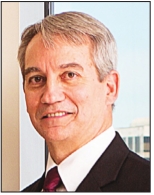 "This means you design the therapy in such a way that the environment and the interaction with others become therapeutic.”
"This means you design the therapy in such a way that the environment and the interaction with others become therapeutic.” – Tim Wilcox, director of Behavioral Medicine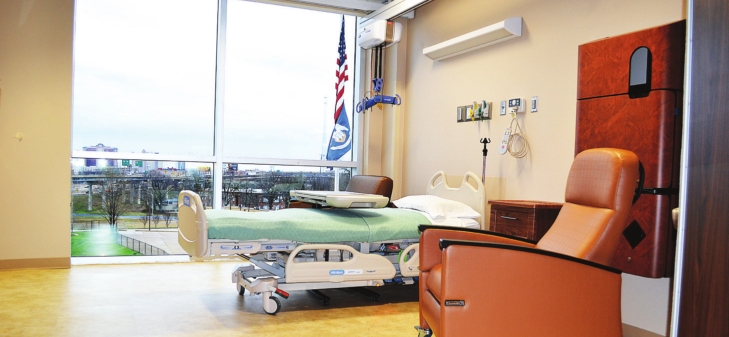
Technology is incorporated throughout the rehabilitation, but the most impressive is a ceiling lift. Patients who have trouble bearing weight or who have balance problems can walk with a harness that bears some of their weight, enabling them to walk and train in a safer environment, without fear of falling. Another innovation, bed board technology, connects staff electronically to patients, giving alerts and reminders about medication or therapy. “What’s nice is that these technological pieces are making an impact at the bedside,” Mangin said. “The beds alert us when somebody is moving. Alarms sound when they get out of bed. These are all things we could incorporate into this building because it’s new.”
Mangin also noted that they expect the building to be quieter than a typical hospital with overhead announcements and audible alarms. “This is very important for the geriatric population and for anyone who is trying to rest and recover and heal.”
Renee
McCuller, formerly nursing director for inpatient rehabilitation, will
be chief nursing officer for the entire hospital. She is pleased that
the services will include recreational therapy and allow patients to go
on functional outings to test their skills. “For instance, if we have a
neurological patient who is
being discharged, we might take the patient out to purchase food for a
cooking project and come back to prepare a meal in our kitchen area
here,” she explained.
Services for physical rehabilitation will mirror best practices in the field, something the staff there know well. Willis-Knighton’s physical medicine and rehabilitation program is accredited by the Commission on Accreditation of Rehabilitation Facilities (CARF). Mangin indicates they are proud to be one of only two accredited rehabilitation programs in the state and the only one north of the I-10 corridor to hold this special designation.
Just as physical rehabilitation patients will have a much better environment, so will patients requiring behavioral rehabilitation. Wilcox will move patients into 34 custom rooms at the new hospital. His space will feature separate units for adult patients and those in the geriatric program.
“What we’re most proud of is the geriatric program,” Wilcox says. “It will offer medical beds, which means we can take care of the needs of the geriatric population, even if they are infirm or have some sort of medical need.”
Like Mangin, Wilcox has designed the units to encourage patients not to remain in bed. “We’re using a philosophy of getting people out of their rooms,” he said, “There will only be a couple of TVs in the rooms. If they want to watch TV, they have to interact, to socialize.”
 Wilcox
points to a continuous walking loop on the floor that allows dementia
and cognitive disorder patients to get exercise in a safe and beneficial
environment.
Wilcox
points to a continuous walking loop on the floor that allows dementia
and cognitive disorder patients to get exercise in a safe and beneficial
environment.
“There is an old term in the literature called a ‘therapeutic milieu,’” Wilcox said. “This means you design the therapy in such a way that the environment and the interaction with others become therapeutic.”
The facility lends itself to that. When patients look out of the large windows, they will see the skyline, the lights of Shreveport at night. It’s going to be a pretty awesome thing,” Wilcox affirmed.
Joining the two rehabilitation services, the outpatient dialysis unit bears custom features designed to create a positive experience for patients. Debbie Olds, chief nursing officer at Willis-Knighton Medical Center, oversees that clinical area and admits that the staff is pleased with the comfort and innovative technology available in the new location.
This unit, just a short walk from a firstfloor entrance on the north side the hospital, features 13 private patient stations. Olds explained that they are individual cubicles easily viewed by nursing staff. Each features a television, Wi-Fi connection and comfortable heating/massaging hemodialysis chairs. They even offer a bariatric station, complete with ceiling lift and customized chair.
With all these specialized services, Willis-Knighton executives anticipate referrals not just from local physicians but from those in a wider area as well. Expecting growth, Willis-Knighton also purchased the Hamilton Terrace Learning Center from the Caddo Parish School Board to address needs of the hospital, clinicians and the Highland community.
From Willis-Knighton’s perspective, rehabilitation of old buildings is a smart move. They are often solidly built. The infrastructure is already there. They help preserve the history of the neighborhood in which they are located. And renovation sends far fewer dumpsters to landfills than does tearing down a structure.
“If we’re able to wean someone off drugs or alcohol or pull them back from suicidal tendencies, if we’re able to help someone walk again after a traumatic injury, at the end of the day I think we’ve done something special,” said Ryan Smith, administrative analyst and project manager. “And to do it in a place with the latest technology and fantastic clinicians is what excites us from an administrative standpoint. We are here to keep it clean, keep the lights on and keep the grass cut. The staff will be doing the real work.”
Rehabilitation.
The word by definition brings to mind words such as “restore” and
“re-establish.” With the opening of the WK Rehabilitation Institute,
anticipated in early March, Willis-Knighton defines what it is doing for
patients, for this building and for the larger community.


